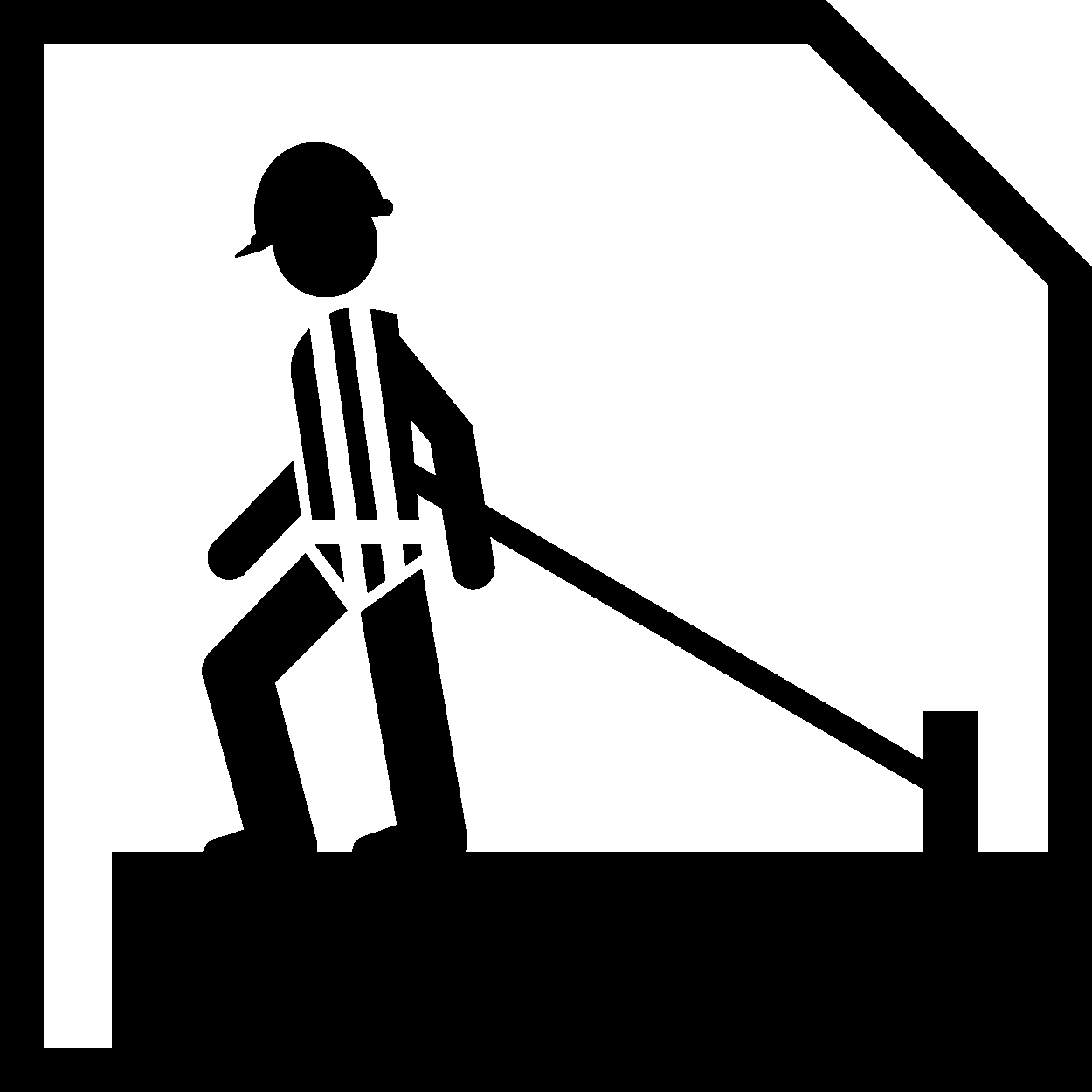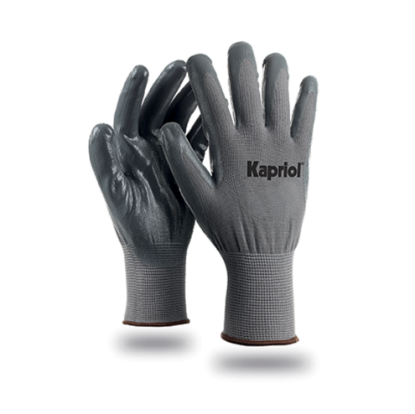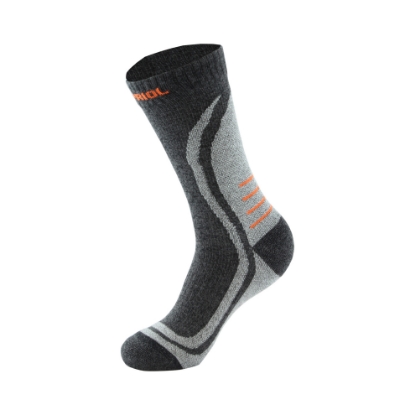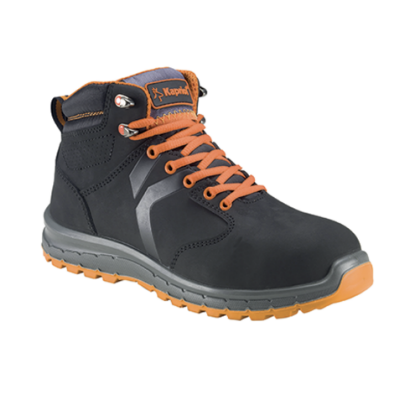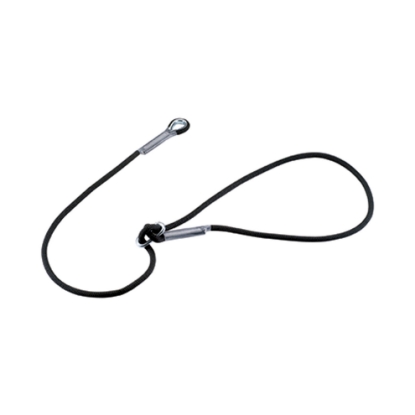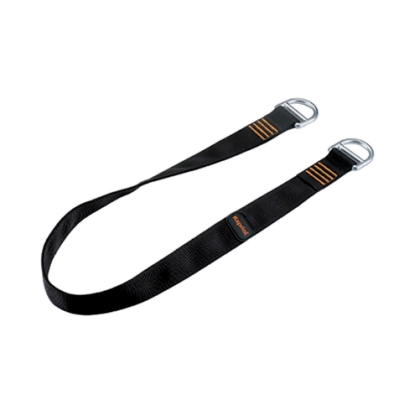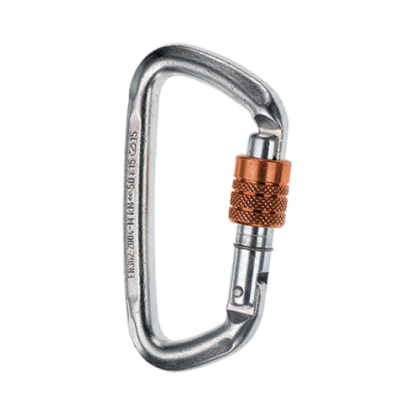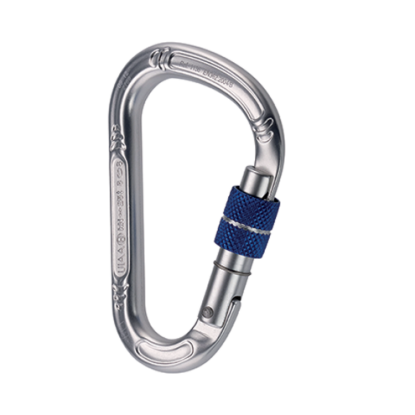| Art./Item | L (cm.) |
|---|---|
| 27994 | 65 |
The anchorage webbing is a component of fall protection equipment that enables and facilitates connection to the structural anchorage point.
The anchorage webbing consists of a strong polyamide strap with a length of 65 cm.
TECHNICAL SPECIFICATIONS
- breaking load 22 kN
- standard EN 795B
MATERIAL
- Webbing: polyamide
Maintenance and storage of PPE
PPE periodic checks and inspections
Temporary anchorage systems
Pendulum effect
Falling factors
Correct and regular maintenance helps prevent premature ageing of PPE. For this reason, users are recommended to carefully respect all indications found in the user and maintenance manual that accompanies each PPE and to follow the simple storage and preservation rules:
- Keep away from sunlight and UV rays as these are the primary cause of ageing of PPE textile fibers
- Keep PPE away from direct heat sources as the synthetic textile fibers used to make harnesses, lanyards, and energy absorption systems have a very low melting temperature
- PPE must be stored in cool and dry areas, as humidity generates mold harmful to textile fibers and corrosive on metal parts
- A periodic cleaning operation is essential to ensure a good durability of the PPE
- A washing with lukewarm water eliminates surface dirt and that present inside the textile fibers
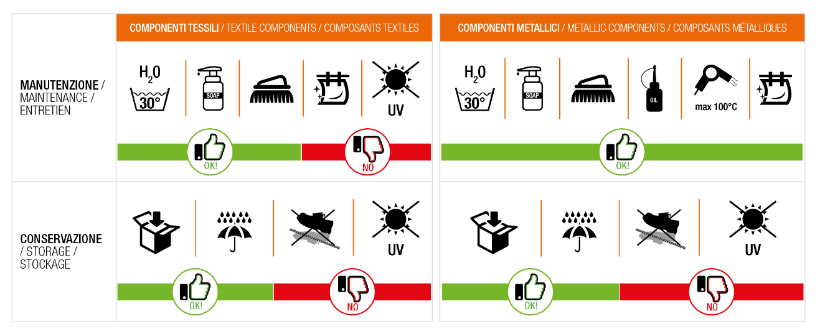
The current legislation requires that each equipment must be subjected to periodic inspections:
- Before, during and after use, the user must check the PPE conditions and integrity through a visual inspection after each use
- At least every 12 months, PPE must be subjected to mandatory periodic checks and inspections by competent personnel authorized by the manufacturing company
Each PPE is accompanied by a manual and identity card that must be kept for the entire use duration of the product and filled in with the periodic inspections data.
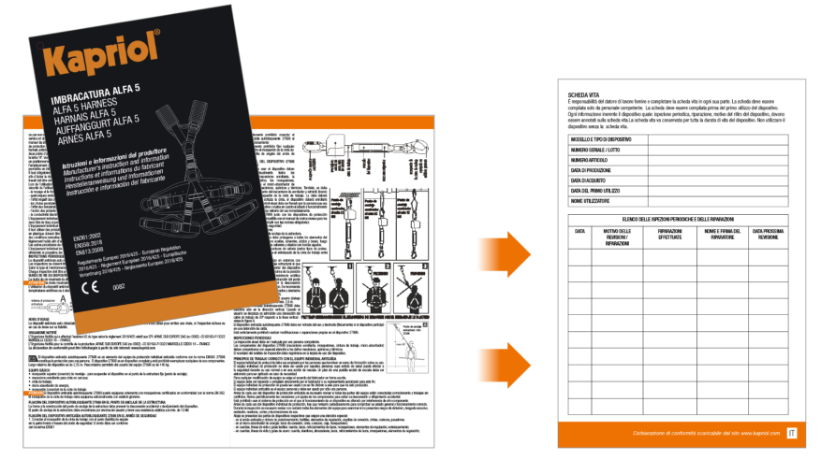
Anchors are the key points that guarantee the operators safety at height. Temporary anchoring systems can be connected to permanent anchors, such as connecting webbing. Here below there are some examples that demonstrate the different resistance of the anchor according to the type of use. It is good practice for users to be aware of how significantly the resistance can vary.
1. With this type of use, its resistance is approximately 2/3 of the webbing nominal value
2. With this type of use, its resistance is 2 times higher than the webbing nominal value
3. If used on a structure with edges, the resistance is approximately 2/3 of the webbing nominal value
4. If used on a structure with edges, the resistance is approximately 1/3 of the webbing nominal value
5. With this type of use, its resistance is 1/2 of the webbing nominal value
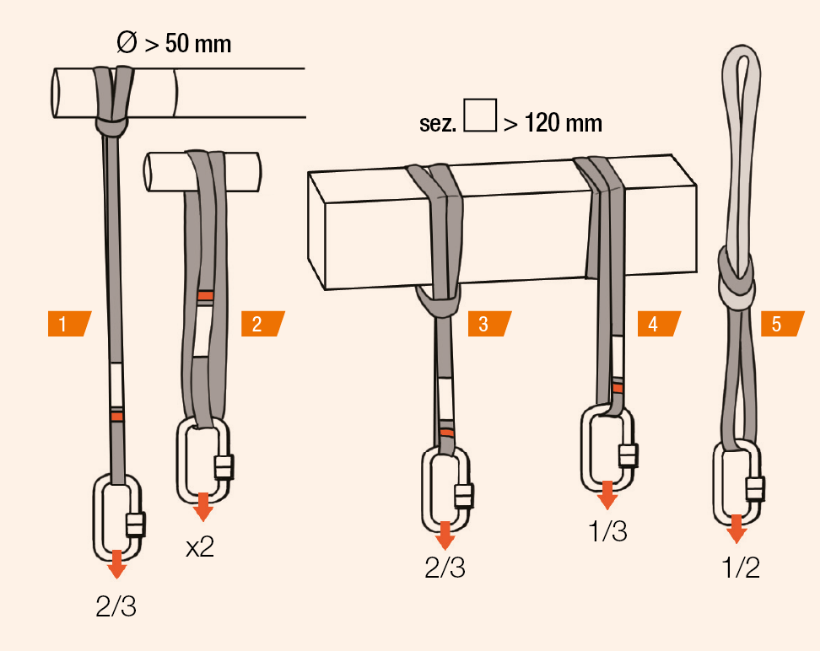
If the operator is connected to an anchorage point by a retracting device or a rope, in the event of a fall there may be hazardous and uncontrolled side swinging, the so-called pendulum effect. To decrease the risks associated to the pendulum effect, it is important that the fall protection device is positioned vertically in relation to the work area.
The operator must therefore work with a safety clearance of 30° below the anchorage point. When it is not possible to position the rope retracting or fall protection devices in a perpendicular position in relation to the anchorage point, it is necessary to foresee a number of deviation or sheave points to dampen the pendulum effect.
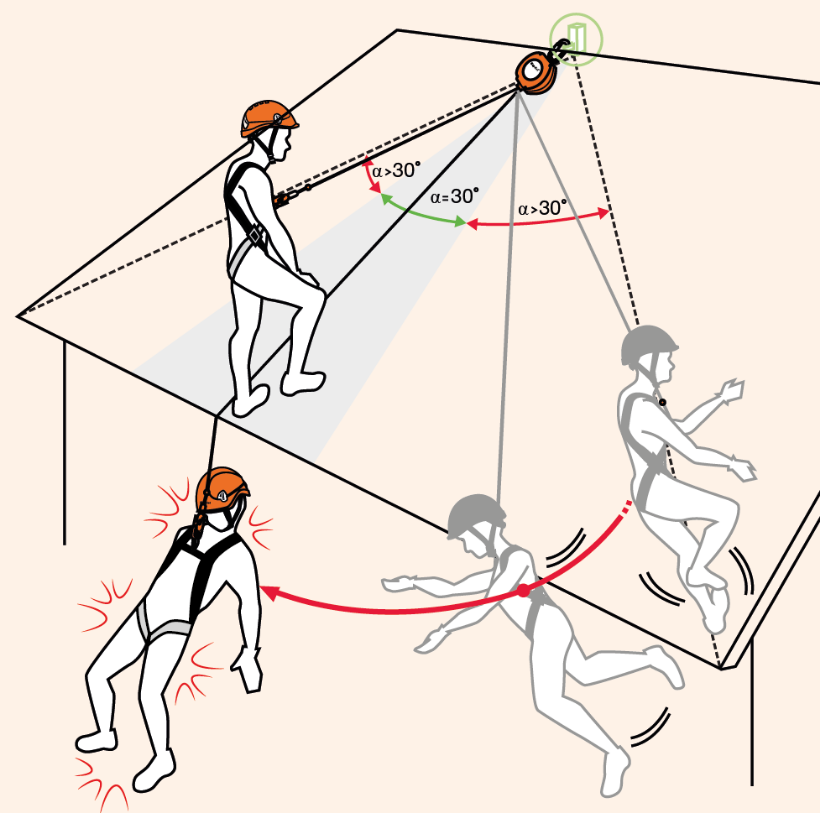
A FATTORE DI CADUTA 0
Il punto di ancoraggio è posto al di sopra della testa dell'operatore; il dispositivo anticaduta risulta essere completamente disteso. In caso di caduta si ha la minor distanza tra il piano di calpestio dell'operatore e il possibile ostacolo sottostante.
B FATTORE DI CADUTA 1
Il punto di ancoraggio è posto allo stesso livello del punto di attacco dell'imbracatura. In questo caso la caduta è pari alla lunghezza del cordino + la distanza del assorbitore di energia intervenuto.
C FATTORE DI CADUTA 2
Il punto di ancoraggio è posto sullo stesso piano di calpestio dell'operatore. In questo caso la caduta è pari a due volte la lunghezza del cordino + la distanza dell'assorbitore di energia intervenuto.
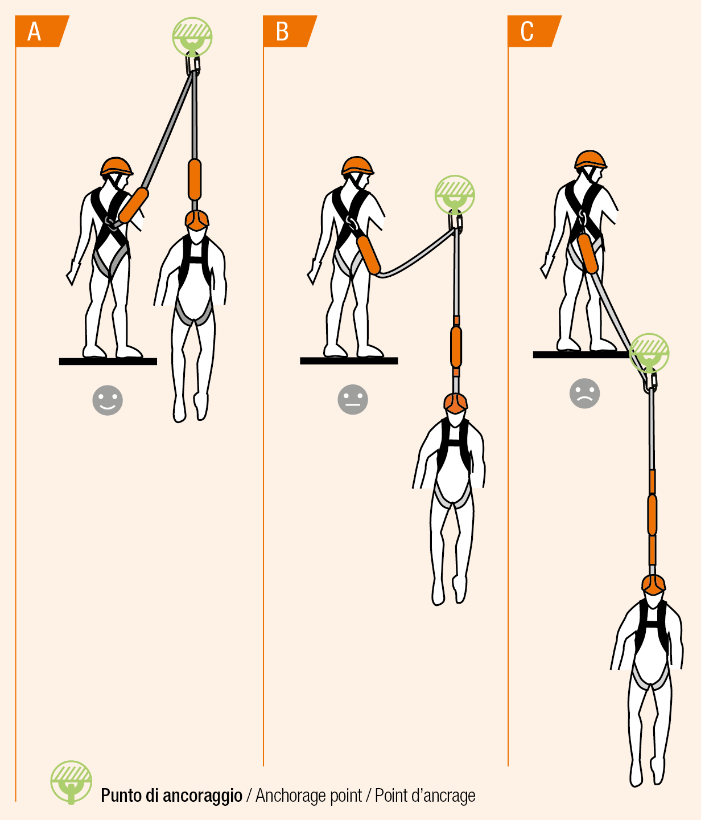
Recommended use
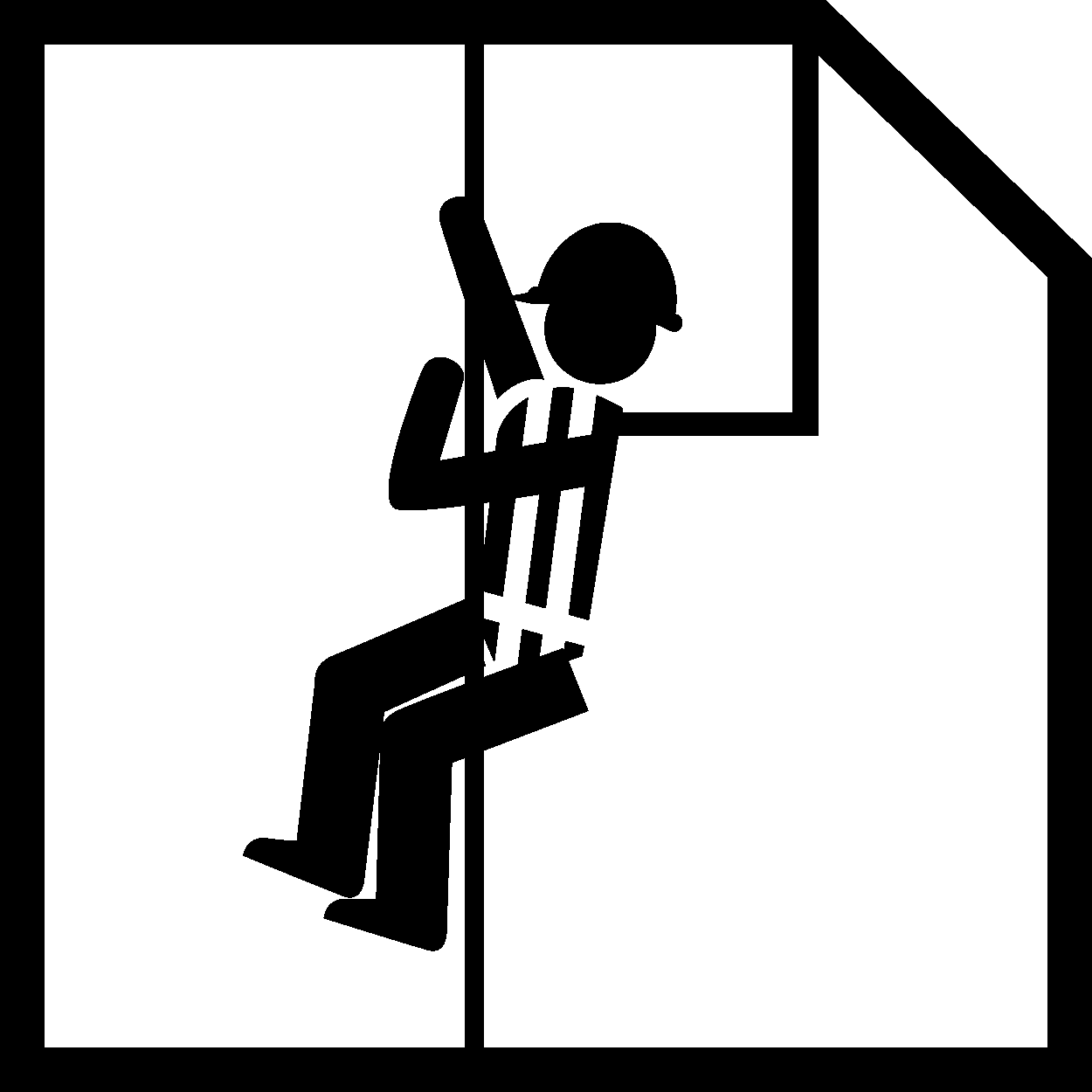
Suspension work
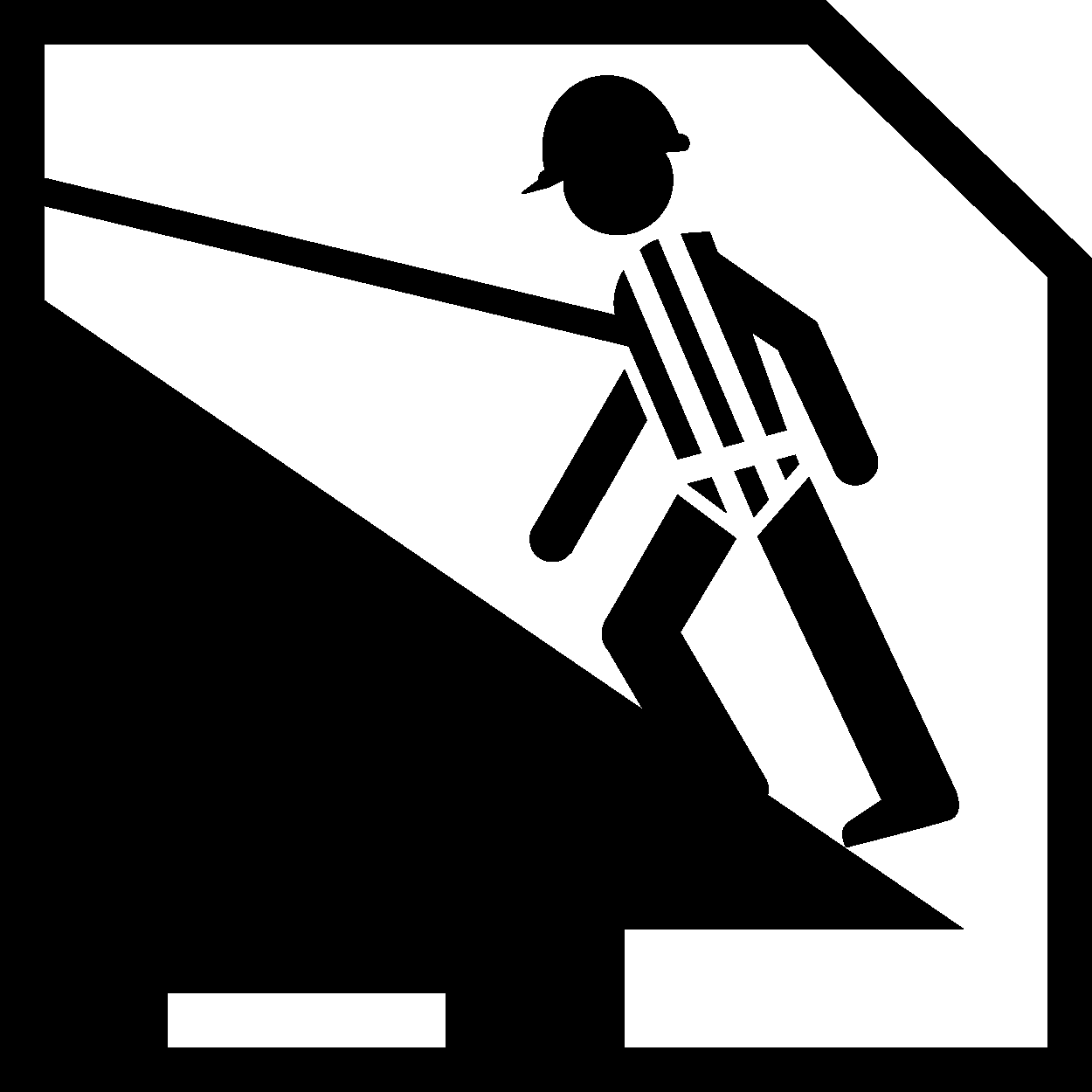
Inclined surface
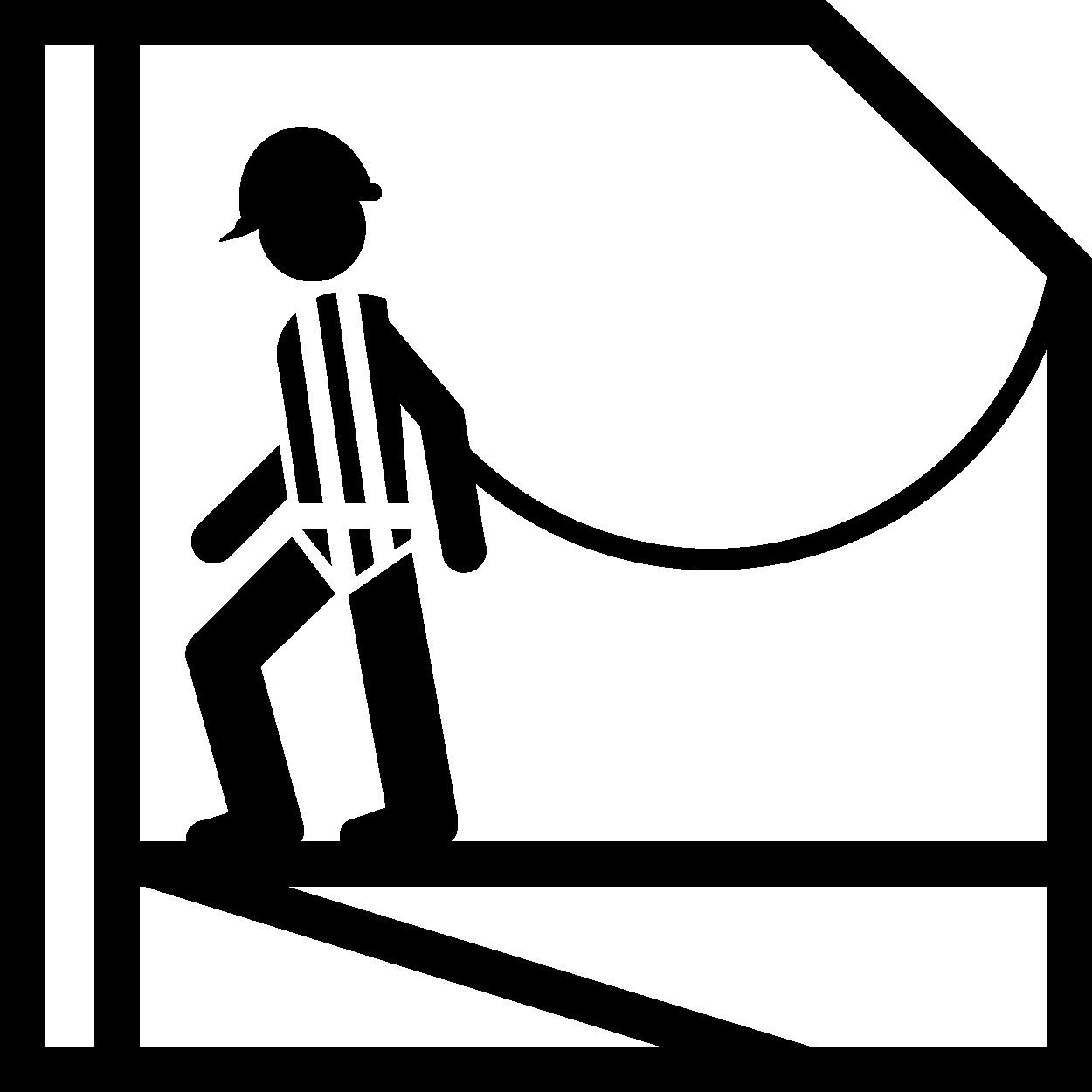
Scaffolding
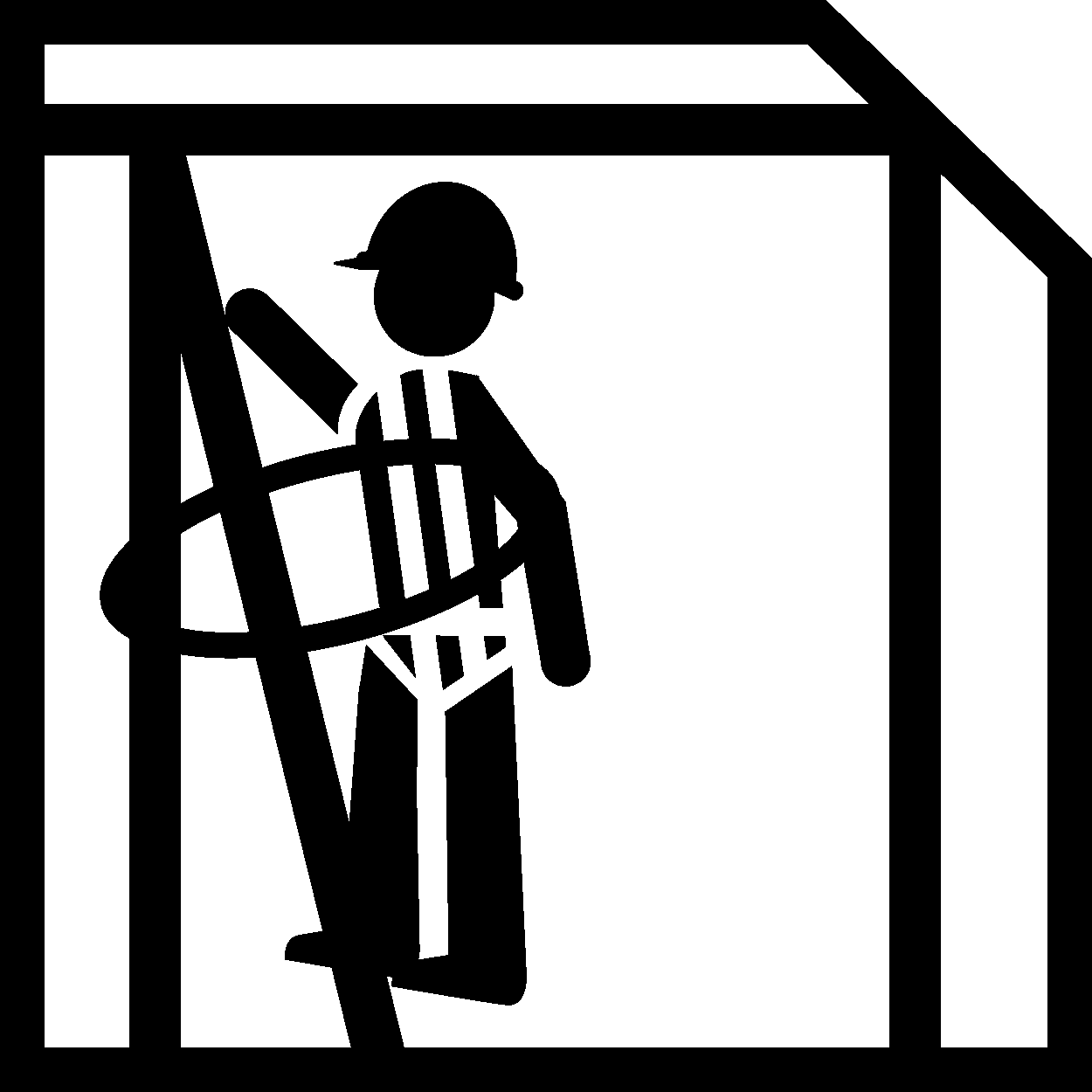
Positioning (on upright)
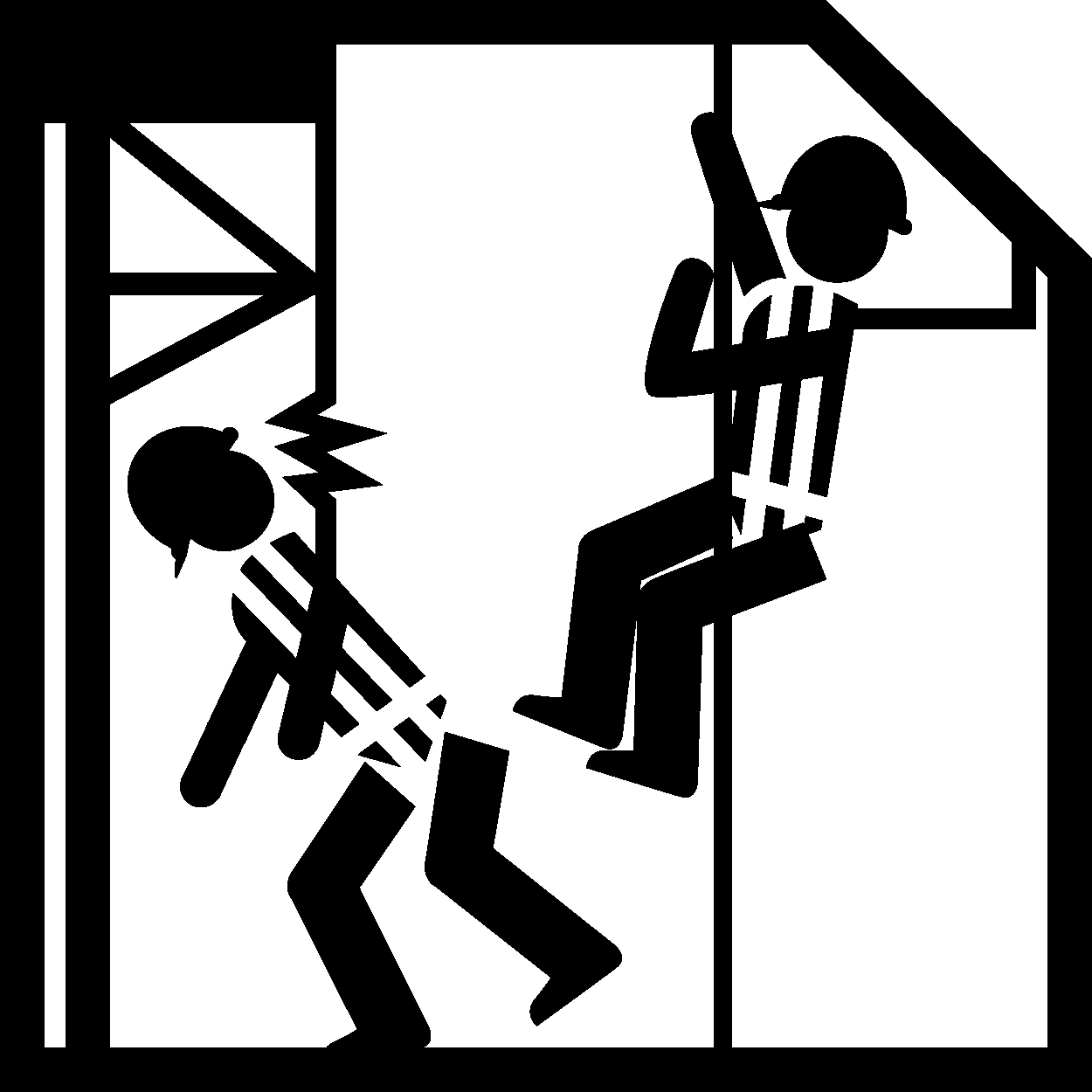
Rescue and recovery
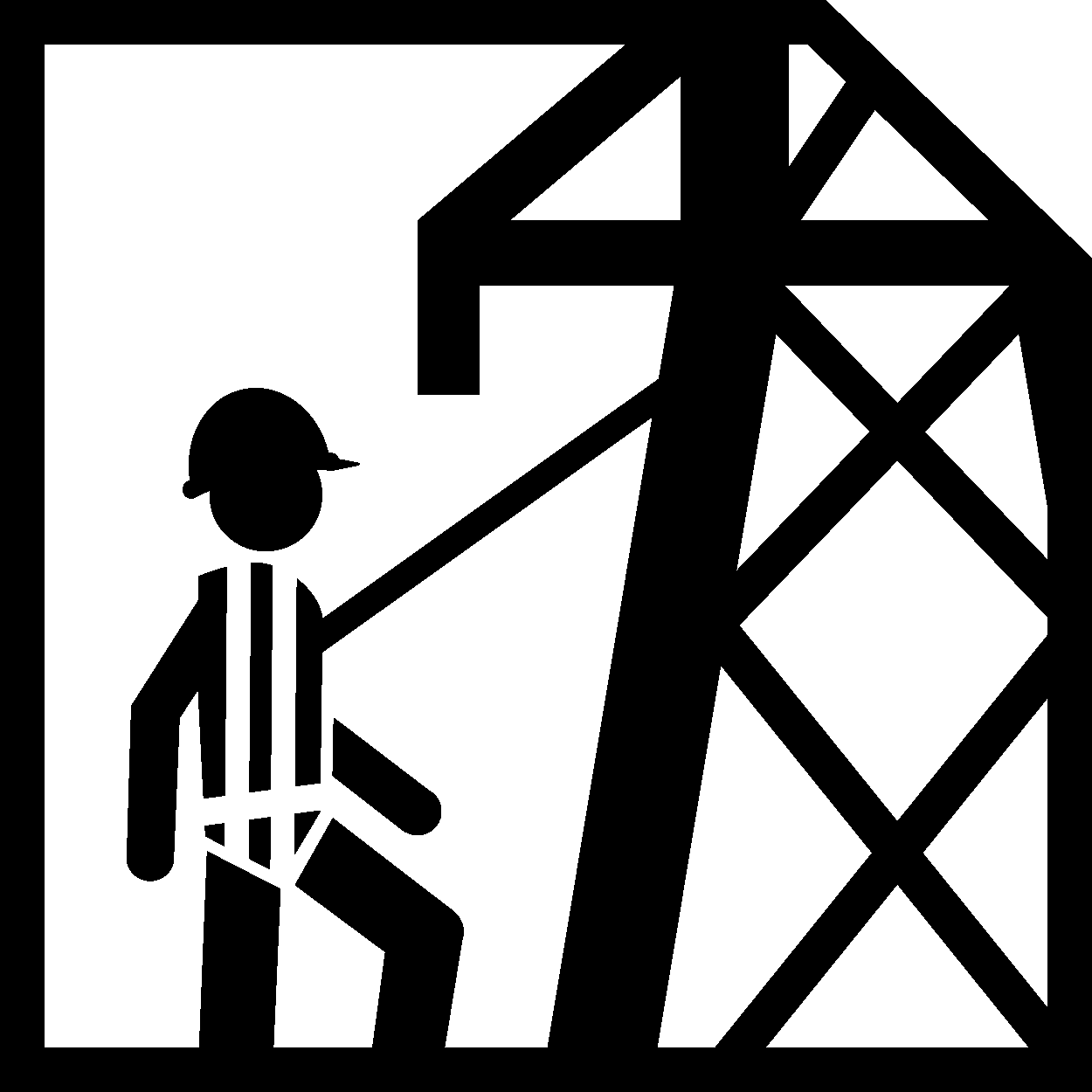
Trellis
